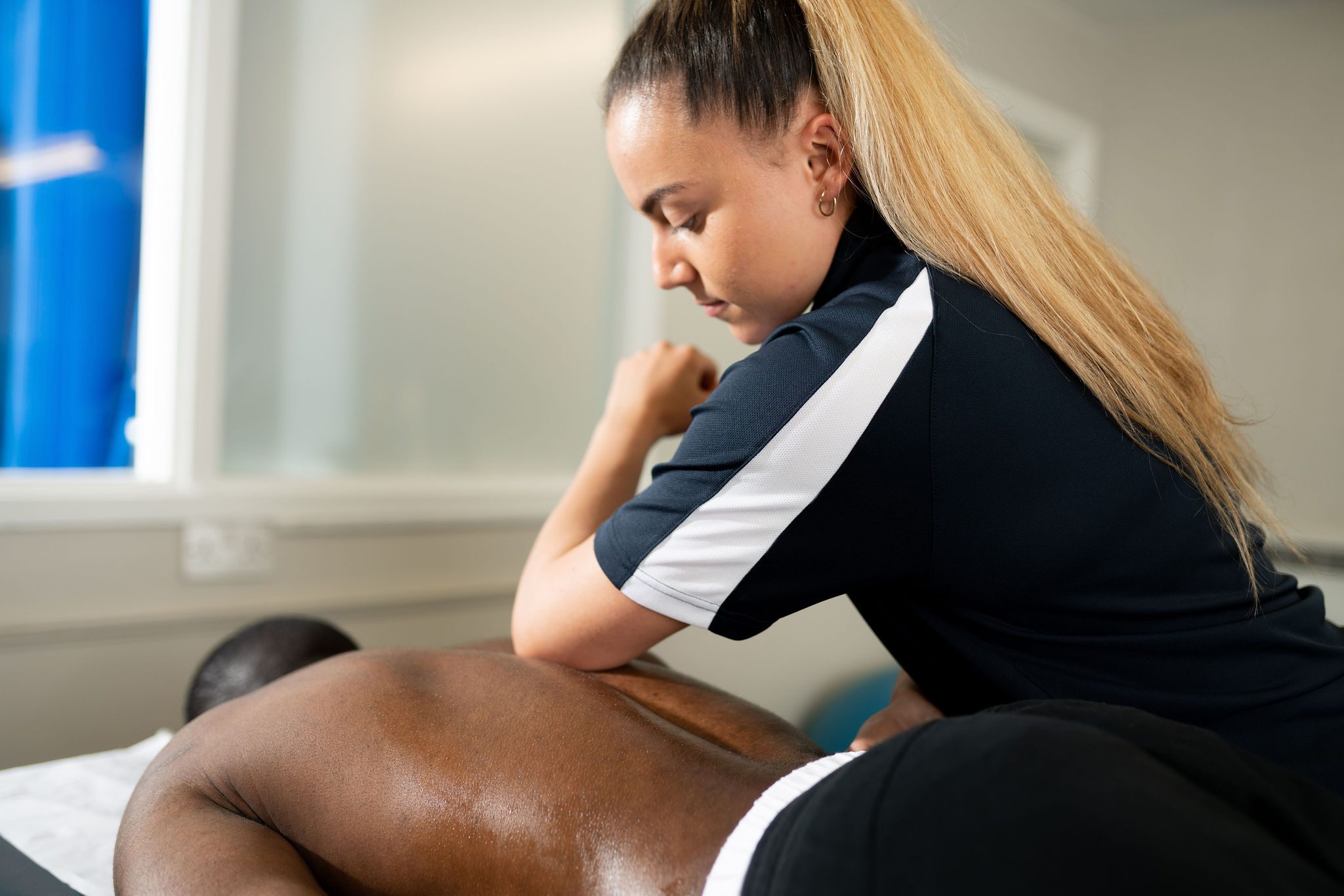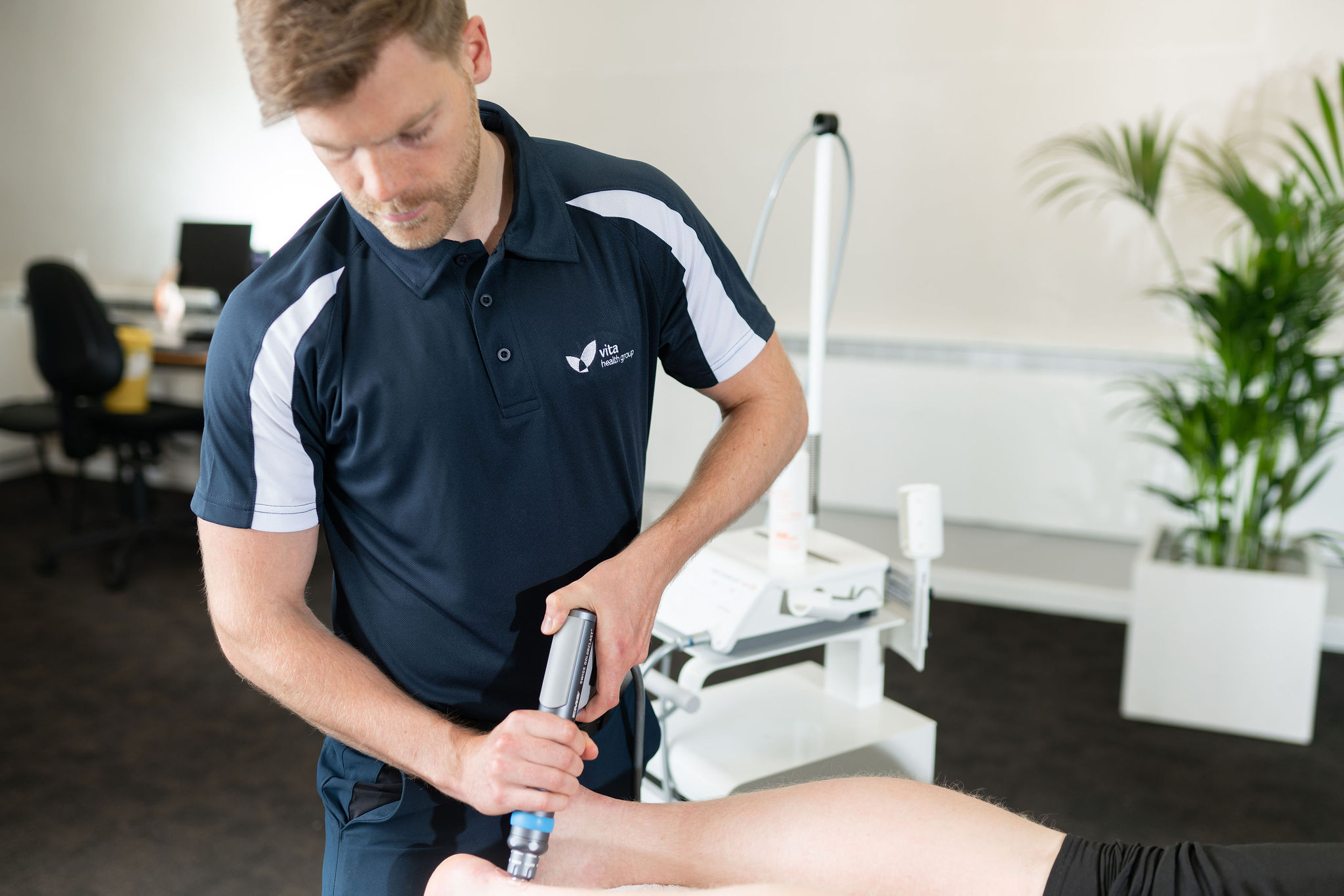Steroid injections: Five of the lesser known benefits
-
What is Hyaluronic Acid/Ostenil Plus?
Hyaluronic acid is a long polysaccharide chain, that is naturally present in the human body. It is found in the highest concentrations of fluids in the joints. OSTENIL® PLUS is an isotonic solution of highly purified hyaluronic acid, developed specifically for the treatment of osteoarthritis.
-
What are the benefits of having an injection?
The injection can help to reduce the irritability and severity of your symptoms to allow continued rehabilitation and conservative treatments.
-
Who is going to administer the injection?
A specialist physiotherapist, who has undertaken further injection training to assess and administer the injection safely.
-
When should I not have an injection?
You should avoid the injection if you:
- have an infection on your skin or anywhere else in your body any known allergies to medications to be injected
- feel unwell
- are pregnant or breastfeeding
- under 18 years old
- do not want the injection
- do not understand why you are having the injection.
-
What are the possible side effects?
- Infection – if the area becomes hot, swollen and painful for more than 24hours, you should contact the clinician that injected and your GP reduction in heart rate and blood pressure, as well as
- light-headedness dizziness
- palpitations
- blurred vision
- nausea
- feeling warm or cold
- facial pallor
- excessive sweating
- fainting
You may also be asked to wait for 20 minutes following injections to ensure there is no allergic reaction to the medication.
-
How is the injection done?
The skin is cleaned with antiseptic, a needle is gently put into the affected area and the solution is injected through a needle.
-
Is the injection painful?
You should expect to feel some pain during the procedure. All efforts will be made to minimise discomfort. Whilst the area that is going to be injected can remain sore for the next 48 hours, it is usually safe to take over the counter pain relief to relieve symptoms. (Subject to your own allergies)
-
How fast does the injection work?
You will probably not notice any benefits immediately after the first injection, but you should gradually start to feel less pain and stiffness over the next few weeks. The improvement in your symptoms is likely to persist for several months, depending on the progression of the degenerative change in the joint being treated.
When the effects of your OSTENIL® injections begin to wear off, you can safely choose to have another injection if your clinician agrees it is appropriate. -
How many injections can I have?
This will depend on severity of your symptoms and effects of the first injection. However, there are no specific limits on the amount of injections.
-
Will I have to be seen again?
Some people will need a phone or face – face follow up appointment, others will be able to manage independently without follow up appointment. You can discuss the most appropriate next steps with your clinician.
-
What is a corticosteroid?
A medicine which can help relieve inflammation (swelling) and pain. It is sometimes called steroid for short.
-
Is this the same drug that athletes and bodybuilders sometimes take?
No, these medications are called anabolic steroids which mimic the effect of the male sex hormone testosterone.
-
Why am I being offered a steroid injection?
The injection delivers steroid medication directly to the site of pain, which is usually more effective, and has less side effects than taking steroid tablets. The injection should reduce pain for least 6 weeks and allow you to slowly return to your normal activities or to engage with a period of rehabilitation.
-
Could I take anti-inflammatory tablets or other pain-relieving medications instead?
You can, and that may be more appropriate for some people. However, taking regular pain-relieving medications for a weeks or months may cause side effects, and therefore a steroid injection can be preferred.
-
Are there times when I should not have a steroid injection?
Yes, if you:
- Have an infection on your skin or anywhere else in your body Are allergic to Lidocaine (local anaesthetic) or steroids
- Feel unwell
- Are due to have surgery in the area in the next 6 months Are pregnant or breast-feeding
- Have a replacement joint at the injection site
- Are under 18
- Have poorly controlled diabetes and/or hypertension
- Do not want the injection
Your clinician will discuss these factors with you when deciding whether it is safe for you to have the injection
-
What are the possible side-effects of a steroid injection?
They include the following and a more detailed list can be found on the manufacturer’s information:
- Cosmetic changes including reduced skin pigment and/ or dimpling of the skin at the injection site Flushing of the face for a few hours
- Bruising at the injection site (more likely if you are on blood thinning medications)
- A temporary Increased pain (up to 2-3 days)Numbness, tingling or increased pain if a nerve has been touched by the needle
- Tendon rupture
- Slight vaginal bleeding
- Diabetic patients may notice a temporary increase in blood sugar levels and should monitor these after the injection for up to 10 days, seeking medical advice as needed
- Changes in Mood. This is more likely if you or your family have a history of psychosis
- Increased blood pressure, which is unlikely to be noticeable unless your blood pressure is currently not controlled
- Post injection joint Infection: This is very rare, one person in 10,000 may experience this. if the area that was injected becomes hot, red, swollen and very painful within 24-72 hours after the injection you should seek urgent medical attention
- Other infections: Avoid close personal contact with unwell individuals following steroid injection. For example, people with Chickenpox, measles, and tuberculosis, especially if you have not had chickenpox or completed routine childhood vaccinations
- Anaphylaxis, which is a life-threatening allergic reaction. Anaphylaxis is extremely rare in response to injected steroids or local anaesthetic. You will be asked to wait for up to 30 minutes after the injection to ensure you do not have any immediate adverse reaction to the injection
You will be asked to wait for 30 minutes after the injection to ensure there is no allergic reaction to the drugs.
-
Can I still have the injection if I am on blood thinning medications?
If you are on Warfarin your INR will have to be checked within 48 hours before having the injection and then rechecked within 72 hours post injection.
If you are on Rivaroxaban, Apixaban, Dabigatran or Edoxaban we would normally ask you to stop taking the medication 12 hours before having the injection, provided that your underlying condition is stable and your GP/Consultant is agreeable for the injection to take place.
-
How long does the effect last?
This varies from person to person. On average pain will reduce for at least 6 weeks, which should allow time to slowly increase normal activities or to engage with rehabilitation.
-
What should I do after the injection?
We will ask you to stay in the waiting area for up to 30 minutes to monitor for any adverse reactions, after this you should keep the injected area clean for the rest of the day, and reduce activities of the injected body part for 5-7 days. Your clinician will provide advice specific to your situation.
-
How long can the injection last?
One injection of OSTENIL® PLUS can reduce pain and improves function in knee OA over 6 months.
Other services
Vita is an award-winning, CQC registered healthcare provider

















